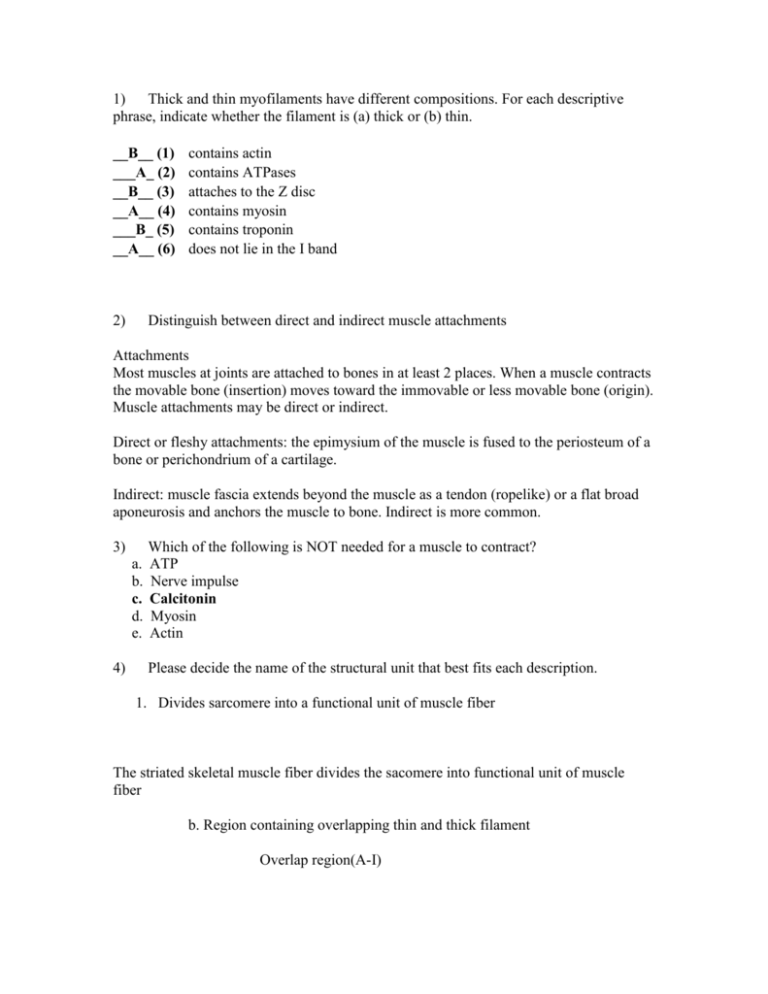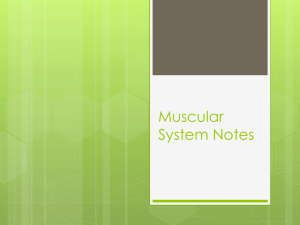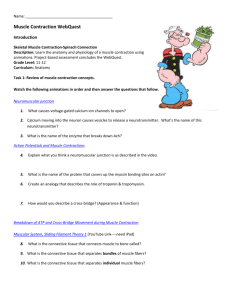muscle worksheet 2
advertisement

1) Thick and thin myofilaments have different compositions. For each descriptive phrase, indicate whether the filament is (a) thick or (b) thin. __B__ (1) ___A_ (2) __B__ (3) __A__ (4) ___B_ (5) __A__ (6) 2) contains actin contains ATPases attaches to the Z disc contains myosin contains troponin does not lie in the I band Distinguish between direct and indirect muscle attachments Attachments Most muscles at joints are attached to bones in at least 2 places. When a muscle contracts the movable bone (insertion) moves toward the immovable or less movable bone (origin). Muscle attachments may be direct or indirect. Direct or fleshy attachments: the epimysium of the muscle is fused to the periosteum of a bone or perichondrium of a cartilage. Indirect: muscle fascia extends beyond the muscle as a tendon (ropelike) or a flat broad aponeurosis and anchors the muscle to bone. Indirect is more common. 3) a. b. c. d. e. 4) Which of the following is NOT needed for a muscle to contract? ATP Nerve impulse Calcitonin Myosin Actin Please decide the name of the structural unit that best fits each description. 1. Divides sarcomere into a functional unit of muscle fiber The striated skeletal muscle fiber divides the sacomere into functional unit of muscle fiber b. Region containing overlapping thin and thick filament Overlap region(A-I) c. Region containing only myosin filaments The H-band 5) Explain the critical role calcium plays in a muscle contraction. Use the terms troponin, tropomyosin, actin, myosin, ATP in your answer. Calcium plays a critical role in a muscle contraction because it result in movement of troponin and tropomyosin on their thin filaments, and this enables the myosin molecule heads to “grab and swivel” their way along the thin filament. This is the driving force of muscle contraction; tropomyosin is an actin-binding protein that regulates actin mechanics for muscle contraction. Tropomyosin, along with the tropinin complex, associates with actin in muscle fibers and regulate muscle contraction by regulating the binding of myosin and as long as there is ATP present the cross-bridges will bind and pull









